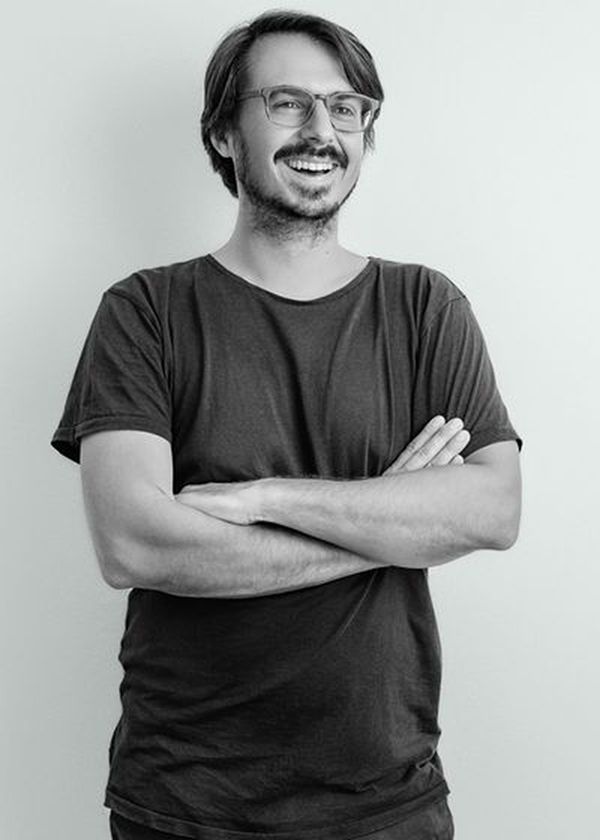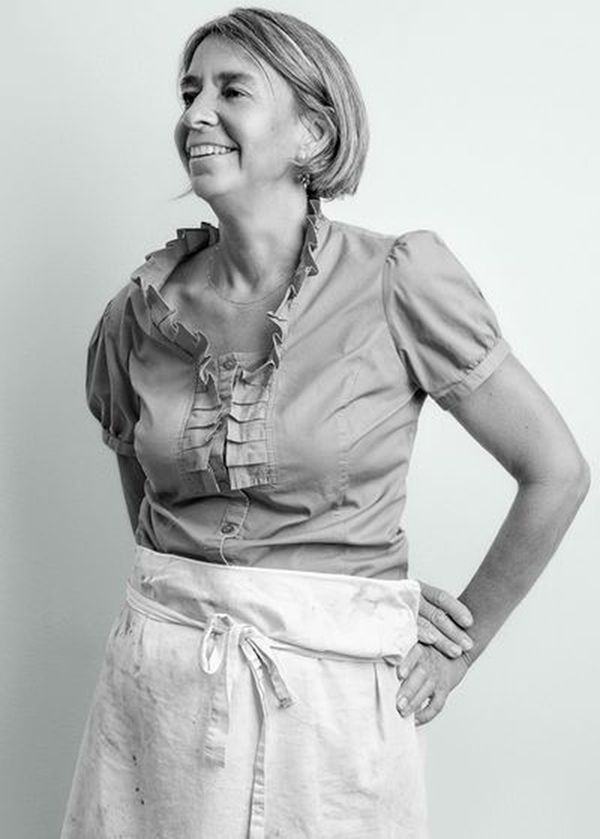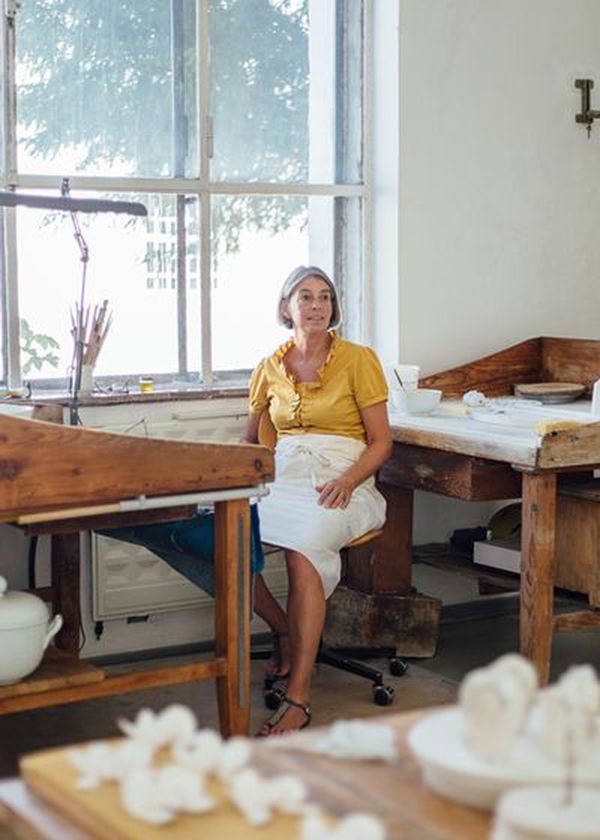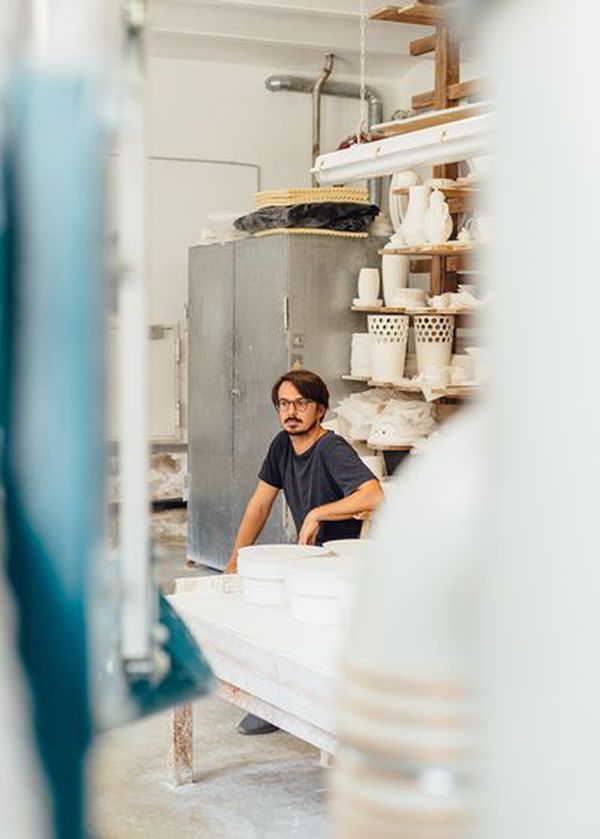
Focus on design: Piotr & Ingrid
In picturesque and tranquil grounds near Nymphenburg Palace, we meet with Ingrid Harding and Piotr Szpryngwald, two innovative creatives working within two different fields: Ingrid in porcelain and Piotr as a designer behind Gaggenau’s Future Research. Here, they talk design, creativity and collaboration.
Words Catherine McMaster
Photography Thai Hibbert

A reputation for peerless craftsmanship takes years for a brand to earn. German porcelain company Porzellan Manufaktur Nymphenburg has been handcrafting beautiful objects for 270 years. Gaggenau is the world’s leading domestic appliance producer, boasting a heritage that stretches back to 1683. Craftsmanship is the heart of their identities. But neither company is stuck in the past. While artisanal methods and attention-to-detail is at the heart of what they do, innovation is equally important.
We spoke to Ingrid Harding, Head of Product Development at Nymphenburg, and Piotr Szpryngwald, designer behind Gaggenau’s Future Research, about their creative processes, the reaction of their customers and why mistakes should be encouraged.

The Magazine: How do you keep your work relevant, yet also retain the traditional qualities your companies are known for?
Piotr: Gaggenau made nails at the very beginning, which you can’t compare to what we do today. Now, we’re very technology driven, and there comes a time when you need to decide if you want to keep up with the pace, or stay as you were. I’m really lucky in that I’m allowed to challenge the things that Gaggenau creates.
Ingrid: Actually, we’re also really lucky here at Nymphenburg in that we’re allowed to be very open, too. We take on very complex things.
The Magazine: Such as?
I: We always made things that were very cutting edge, but we continue to pay tribute to the beautiful old artisanal ways and mix them with new modern thinking. We didn’t make them disappear, we let them converse with each other.
The Magazine: Can you describe the journey from single idea to product?
P: It’s a very classic approach from our research to sketches through to the mock-up of ideas. There’s the constant questioning of what we do. The design process is where you allow yourself to make mistakes, but often that mistake might lead you to something new. Sometimes the smallest most naïve prototype – something just made out of paper – can take you a step ahead.
The Magazine: So, do you make mistakes?
P: I think that’s the reason for my being [laughs]. I want to make mistakes, because then my role is fulfilled.
I: That’s very refreshing to hear! I think we should celebrate mistakes more often because you can learn a huge amount from them. Usually, I’ll quickly sketch something with the material, as it’s the easiest way to react to something. Drawing helps me, but it’s not what I need to make the next step.
The Magazine: How much creative freedom do you both have?
I: That’s a really interesting question, because my colleagues and I are the ones that do the sketch and often we then go to another studio to materialise it. They don’t like to see us doing that.
The Magazine: Why?
I: Because, quite often they feel they’ve become experts with over 40 years of experience and then all of a sudden, a young person comes in and knows nothing about what they’re doing – and is brazen enough to try something new.
The Magazine: What about you, Piotr?
P: I’m not in such a closed environment, so I have the freedom to pursue projects that challenge the existing landscape. I still don’t know exactly what the engineers think about some of the work I do, but I can’t always have their reassurance at every step, especially as I am a conceptual designer.
I: Do you ever talk to them?
P: Of course, and of course I know more or less how things are done. The beauty comes in producing something that’s reproducible. However, on the other hand, when you try to create something that’s not meant to go into production immediately it still can challenge a world that needs to be challenged passively.

The Magazine: That’s a really interesting thought. How do you both work? Singularly or collaboratively?
P: It depends. Sometimes I really like to do things alone. However, if you want a project to be taken into production you’ll need to talk to other people, otherwise you won’t succeed.
I: We always work together because to make all the things that we’re asked to make we need different sorts of expertise, and so it’s always a piece that passes through many hands.
The Magazine: How do you want your customers to feel about what you’re creating?
I: Just like when the chocolate cake goes past you at a restaurant and you haven’t eaten anything yet and you’re just like, ahh…
P: Yes, that’s the first impression, but in the end the things I create have to have some pragmatic function. It needs to lift the customer at some point, but it has to be a machine that assists the cooking process. The best result comes when the machine is not physically ‘there’ anymore: the customer is just cooking, and doesn’t notice its presence. Gaggenau is a functional brand, but Nymphenburg Porcelain is known for beauty rather than purpose. Is that about right, Ingrid?
I: Of course, a figure doesn’t have a functional purpose, but a lot of the pieces should have a daily purpose in your life. It’s always so interesting to see how people react when you put the object in front of them.
P: Yes, and as you said it, the device always needs to put a smile on your face. You have to get an emotional response, but you also must be pragmatically fulfilled by the object too.
The Magazine: What are the objects you are most proud of?
I: It’s kind of like children. You have to treat them all equally [laughs].
P: Yes and no, yet there’s nothing I really favour. For me, when I design something, and it goes somewhere, such as an exhibition, that’s a very beautiful moment.
The Magazine: How about a moment in your career you’re most proud of?
P: For me, it’s when you hear people speaking about something you’ve designed. Also, I like the moment of the presentation because you never know what to expect from people.
I: I always think it’s a very pleasing moment when you pack everything up and it’s finished. A lot of clients really take the time to call and say thank you, which always surprises me.
The Magazine: How has technology affected the way you work?
P: I was more or less born into it, so there was never a time when I questioned it! It’s part of the design process, but I think at some stage you do just need to let technology be technology. However, it is great – you can design something and have a prototype of it in a day.
I: It hasn’t affected Nymphenburg. We model everything ourselves with our hands, because for me, that’s when you see the difference. We use as little technology as necessary.
The Magazine: Do you both ever switch off from your work?
P: Of course! Otherwise I’d go mad. Sometimes it’s difficult when you have a problem in your head and you take it home with you.
I: I’m constantly solving things and thinking how we can make things interesting and different. That makes me crazy. Quite often I’ll wake up and think, ‘Oh, I got it!’




